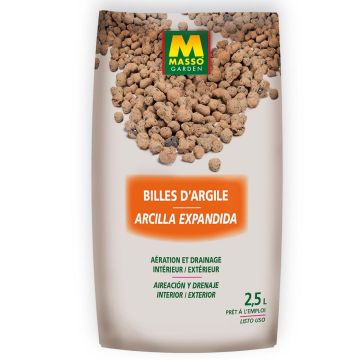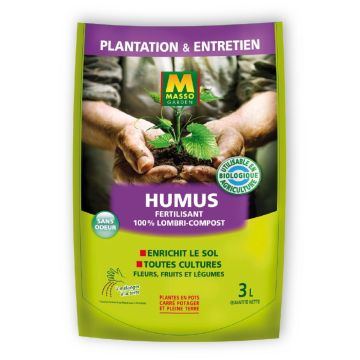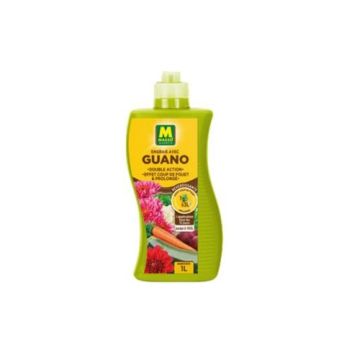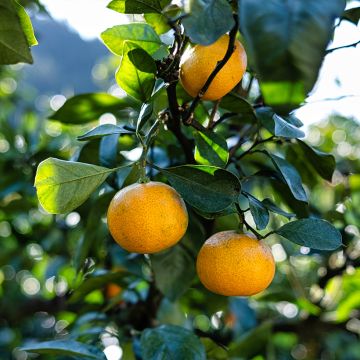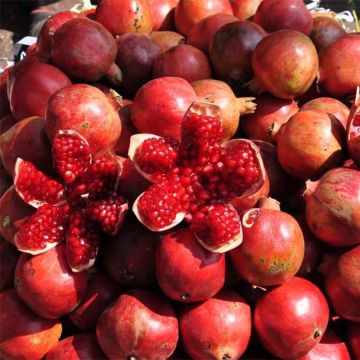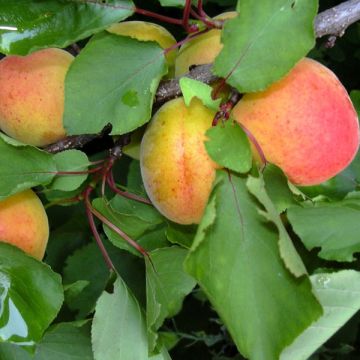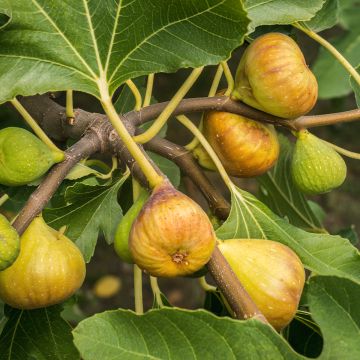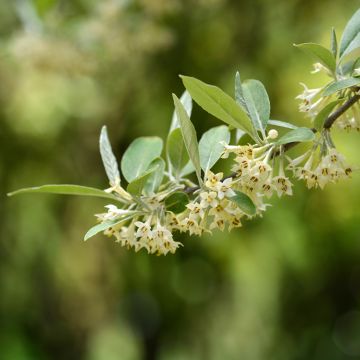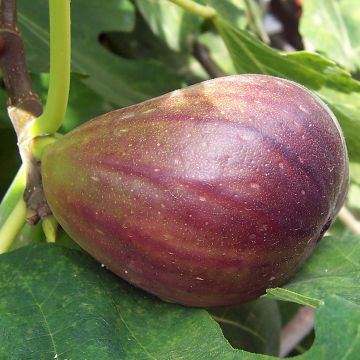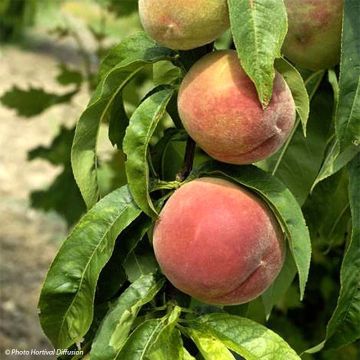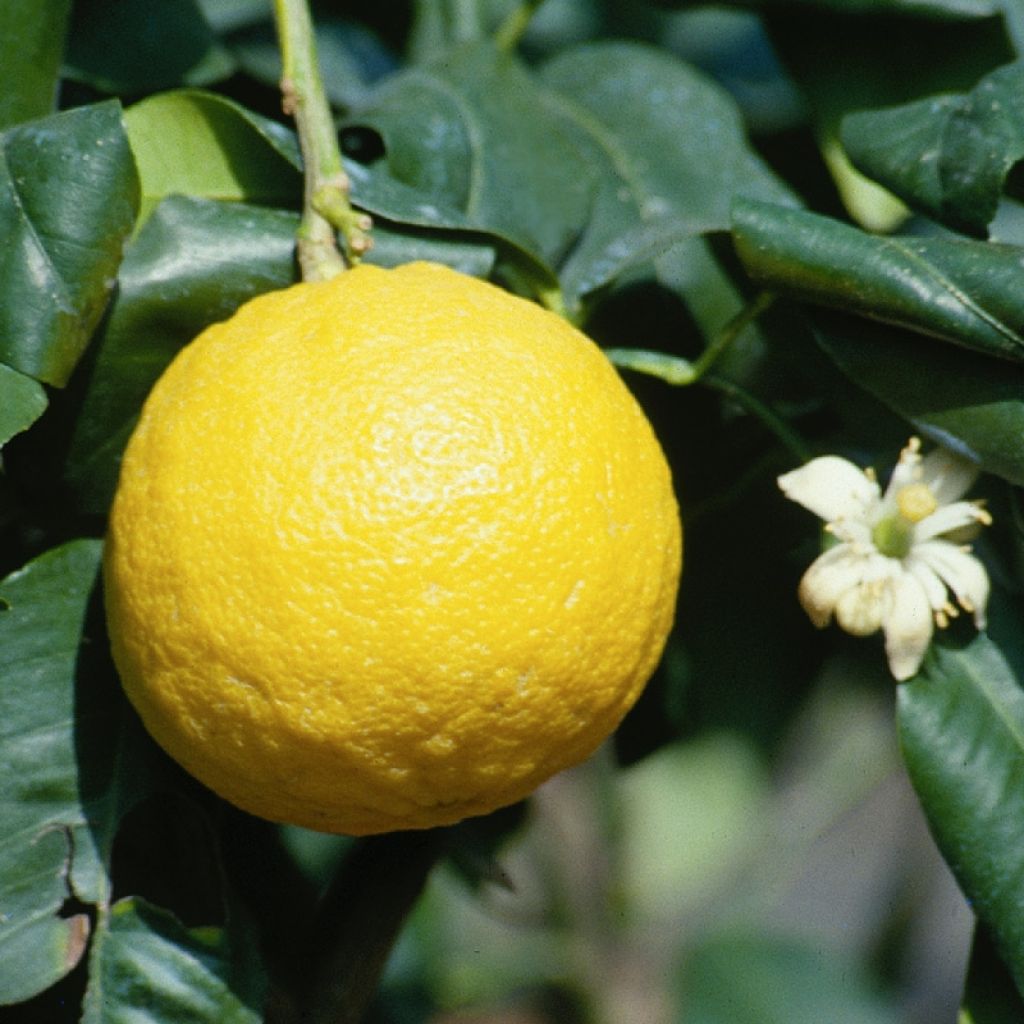

Citrus bergamia - Bergamot Orange
Citrus bergamia - Bergamot Orange
Citrus bergamia
Bergamot Orange
It arrived in great shape, just the tip of a small branch broken. It has a beautiful balanced habit.
Bottine94, 21/02/2025
Special offer!
Receive a €20 voucher for any order over €90 (excluding delivery costs, credit notes, and plastic-free options)!
1- Add your favorite plants to your cart.
2- Once you have reached €90, confirm your order (you can even choose the delivery date!).
3- As soon as your order is shipped, you will receive an email containing your voucher code, valid for 3 months (90 days).
Your voucher is unique and can only be used once, for any order with a minimum value of €20, excluding delivery costs.
Can be combined with other current offers, non-divisible and non-refundable.
Home or relay delivery (depending on size and destination)
Schedule delivery date,
and select date in basket
This plant carries a 6 months recovery warranty
More information
We guarantee the quality of our plants for a full growing cycle, and will replace at our expense any plant that fails to recover under normal climatic and planting conditions.
Description
The Bergamot, in Latin Citrus bergamia, is the citrus tree that you know without even realizing it! Its distinctive lemony aroma has been used everywhere since the 18th century, whether in perfumes (a key ingredient in Eau de Cologne!) or in the famous Earl Grey tea. From April to May, it is covered with small, highly fragrant white flowers. The green and then yellow fruits have the appearance of a small orange, borne on a compact 3 to 4m (10-13ft) tall bush. This sun-loving and heat-loving citrus tree is, as you may have guessed, rather susceptible to cold! It is best grown in a large container and protected from frost in a greenhouse or conservatory.
The Citrus bergamia also called the "Bergamot Orange", is a medium-sized bush of the Rutaceae family, with a rather upright and bushy habit. It is mainly cultivated in the Calabria region in southern Italy, and it is believed to be a hybrid between Citrus limetta (sweet lemon) and Citrus aurantium (bitter orange).
This small tree reaches a height of 3 to 4m (10-13ft) (around 3 in a pot, 4 in the ground under suitable conditions). It spreads to about 2.5m (8ft), and its growth is very slow. Not very hardy, it can be planted in the ground only in very warm climates. Elsewhere, it will be grown in a pot and stored away at the first sign of frost. Primarily cultivated for its fruits, the bergamot tree blooms abundantly in April-May. It produces small white flowers with a sweet and delicious fragrance, characteristic of Citrus. These flowers give way to round fruits, reminiscent of oranges. Their thick and smooth skin, initially dark green, turns yellow when ripe. The flesh of the fruit is greenish, not very juicy, very acidic and bitter. The fruits are often harvested while still green when their essential oil concentration is at its peak. The evergreen and aromatic leaves, intensely green leaves of this citrus tree are ovate, leathery and small.
Bergamot essential oil is widely used by the perfume industry, especially since the invention of Eau de Cologne by Giovanni Maria Farina in 1708. Its oil and zest are key ingredients in Earl Grey tea, which appeared in English salons in the early 19th century. Its fresh and invigorating aroma is increasingly finding its place in the culinary world where they are constantly searching for new flavours to tantalize the taste buds! It is also a plant with antispasmodic, anti-inflammatory, anti-infectious, and worming properties, commonly used in aromatherapy.
Most citrus trees thrive in the ground in the Mediterranean coastal regions, where they find the year-round warmth they need. But to fruit well, they must not lack water or nutrients. Not very hardy, Citrus bergamia starts to suffer from cold temperatures as low as 0°C (32°F). It is a self-fertile bush, meaning that a single plant is sufficient to complete pollination and fruiting.
Report an error about the product description
Citrus bergamia - Bergamot Orange in pictures
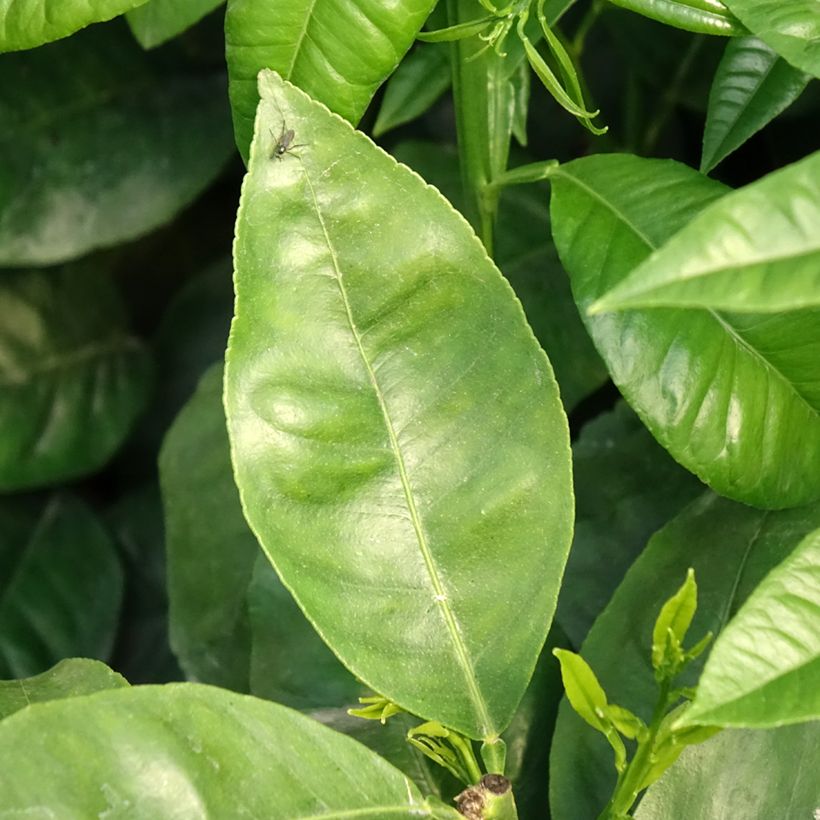



Plant habit
Fruit
Flowering
Foliage
Botanical data
Citrus
bergamia
Rutaceae
Bergamot Orange
Mediterranean
Planting and care
Planting in open ground: Citrus bergamia prefers neutral, slightly acidic, and non-chalky soils. It is only possible to plant it in open ground if you live in a highly favourable Mediterranean coastal area that is spared from frost, as the hardiness of this citrus tree does not exceed -3°C (26.6°F), and it requires a lot of heat to flower and bear fruit. The best period to plant is in early spring, March and April. Be careful not to bury the collar. Citrus trees are naturally greedy and require water to bear fruit well: consider feeding with well-rotted compost or special "citrus" fertilizer. Choose a sunny but not scorching location for your bush, sheltered from the wind to prevent the foliage from drying out and the young fruits from dropping. Place it in a location protected from sea spray.
Planting in a pot: in all other regions, it must be planted in a pot that you can keep in a slightly heated greenhouse or frost-free conservatory, in an atmosphere that is not too dry. It will appreciate being outside in the summer. Planting in a pot or repotting takes place at the end of summer. Choose a pot slightly larger than the root system, as citrus trees do not appreciate feeling cramped. Moisten the root ball well. To improve the drainage capacity of the mix, line the bottom of the pot with clay pebbles. Loosen the root ball and mix two-thirds garden soil with one-third special "citrus" potting soil. Water generously. Use pots made of clay or breathable material.
Citrus trees require a lot of water to thrive. Your Citrus should be watered every day with slightly chalky or non-chalky water, and the soil should remain consistently moist. Similarly, make sure to regularly provide it with the fertilizer it needs: every 6 months for slow-release granular fertilizer or every 3 waterings for liquid fertilizer.
Planting period
Intended location
Care
-
, onOrder confirmed
Reply from on Promesse de fleurs
Similar products
Haven't found what you were looking for?
Hardiness is the lowest winter temperature a plant can endure without suffering serious damage or even dying. However, hardiness is affected by location (a sheltered area, such as a patio), protection (winter cover) and soil type (hardiness is improved by well-drained soil).

Photo Sharing Terms & Conditions
In order to encourage gardeners to interact and share their experiences, Promesse de fleurs offers various media enabling content to be uploaded onto its Site - in particular via the ‘Photo sharing’ module.
The User agrees to refrain from:
- Posting any content that is illegal, prejudicial, insulting, racist, inciteful to hatred, revisionist, contrary to public decency, that infringes on privacy or on the privacy rights of third parties, in particular the publicity rights of persons and goods, intellectual property rights, or the right to privacy.
- Submitting content on behalf of a third party;
- Impersonate the identity of a third party and/or publish any personal information about a third party;
In general, the User undertakes to refrain from any unethical behaviour.
All Content (in particular text, comments, files, images, photos, videos, creative works, etc.), which may be subject to property or intellectual property rights, image or other private rights, shall remain the property of the User, subject to the limited rights granted by the terms of the licence granted by Promesse de fleurs as stated below. Users are at liberty to publish or not to publish such Content on the Site, notably via the ‘Photo Sharing’ facility, and accept that this Content shall be made public and freely accessible, notably on the Internet.
Users further acknowledge, undertake to have ,and guarantee that they hold all necessary rights and permissions to publish such material on the Site, in particular with regard to the legislation in force pertaining to any privacy, property, intellectual property, image, or contractual rights, or rights of any other nature. By publishing such Content on the Site, Users acknowledge accepting full liability as publishers of the Content within the meaning of the law, and grant Promesse de fleurs, free of charge, an inclusive, worldwide licence for the said Content for the entire duration of its publication, including all reproduction, representation, up/downloading, displaying, performing, transmission, and storage rights.
Users also grant permission for their name to be linked to the Content and accept that this link may not always be made available.
By engaging in posting material, Users consent to their Content becoming automatically accessible on the Internet, in particular on other sites and/or blogs and/or web pages of the Promesse de fleurs site, including in particular social pages and the Promesse de fleurs catalogue.
Users may secure the removal of entrusted content free of charge by issuing a simple request via our contact form.
The flowering period indicated on our website applies to countries and regions located in USDA zone 8 (France, the United Kingdom, Ireland, the Netherlands, etc.)
It will vary according to where you live:
- In zones 9 to 10 (Italy, Spain, Greece, etc.), flowering will occur about 2 to 4 weeks earlier.
- In zones 6 to 7 (Germany, Poland, Slovenia, and lower mountainous regions), flowering will be delayed by 2 to 3 weeks.
- In zone 5 (Central Europe, Scandinavia), blooming will be delayed by 3 to 5 weeks.
In temperate climates, pruning of spring-flowering shrubs (forsythia, spireas, etc.) should be done just after flowering.
Pruning of summer-flowering shrubs (Indian Lilac, Perovskia, etc.) can be done in winter or spring.
In cold regions as well as with frost-sensitive plants, avoid pruning too early when severe frosts may still occur.
The planting period indicated on our website applies to countries and regions located in USDA zone 8 (France, United Kingdom, Ireland, Netherlands).
It will vary according to where you live:
- In Mediterranean zones (Marseille, Madrid, Milan, etc.), autumn and winter are the best planting periods.
- In continental zones (Strasbourg, Munich, Vienna, etc.), delay planting by 2 to 3 weeks in spring and bring it forward by 2 to 4 weeks in autumn.
- In mountainous regions (the Alps, Pyrenees, Carpathians, etc.), it is best to plant in late spring (May-June) or late summer (August-September).
The harvesting period indicated on our website applies to countries and regions in USDA zone 8 (France, England, Ireland, the Netherlands).
In colder areas (Scandinavia, Poland, Austria...) fruit and vegetable harvests are likely to be delayed by 3-4 weeks.
In warmer areas (Italy, Spain, Greece, etc.), harvesting will probably take place earlier, depending on weather conditions.
The sowing periods indicated on our website apply to countries and regions within USDA Zone 8 (France, UK, Ireland, Netherlands).
In colder areas (Scandinavia, Poland, Austria...), delay any outdoor sowing by 3-4 weeks, or sow under glass.
In warmer climes (Italy, Spain, Greece, etc.), bring outdoor sowing forward by a few weeks.






























